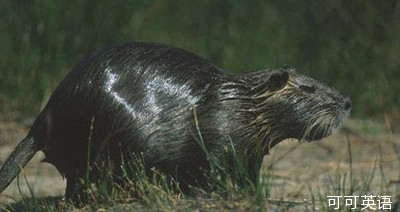Science and technology
科學技術
Invasive species
侵略性物種
Thorny questions
棘手問題
The ecological effects of buckthorn in North America
北美鼠李屬植物的生態影響
CONSERVATIONISTS, being by definition conservative, usually view the introduction of new species into an environment with horror.
生態環境保護者,從定義上看就偏于保守,常對固有環境中新物種的引入恐懼不已。
If such a species is successful, it is described as invasive—a rather pejorative word.
一種新物種一旦引入成功,它常常具有侵略性—一個含貶義的詞語。
But how much change such species actually cause is often moot.
然而,這些物種究竟造成環境多少改變?
So two recent studies of European buckthorn in North America, which attempt to find this out, are a welcome shaft of light on the debate.
常常引來爭論。最近對鼠李屬植物的兩項研究有助于搞清這一問題。所以該研究在這場爭論中受人矚目。
Buckthorn was imported from Europe to America in the 19th century, to make garden hedges.
鼠李屬植物在19世紀從歐洲出口到美國,用來制作花園圍籬。
 Since then it has spread through the country's woodlands, which many naturalists think has been bad for local wildlife.
Since then it has spread through the country's woodlands, which many naturalists think has been bad for local wildlife.
從那時起,它席卷了美國林地。在許多自然主義者眼中,它對當地野生物種產生了不利影響。
The new studies suggest they are right—if you are a frog or a small bird.
但新的研究證明他們的觀點僅適用于青蛙或是小鳥。
If you are a coyote or a raccoon, though, buckthorn is a good thing.
對于土狼和浣熊,鼠李屬植物可是好東西。
Seth Magle, of Lincoln Park Zoo, in Chicago, suspected these predators are commoner where buckthorn grows.
賽思在芝加哥林肯動物園工作,他認為在鼠李屬植物生長的地方,這些食肉動物是常客。
He therefore set up motion-activated cameras in 35 woods near the city.
于是他在芝加哥周圍的35處叢林中架設了移動追蹤照相機。
Some sites had a lot of buckthorn. Some did not.
一些叢林鼠李屬植物繁盛,一些則不然。
He did indeed find more coyotes and raccoons where buckthorn is common—particularly in spring, when birds are nesting.
在鼠李屬植物常見地區,他的確發現了更多土狼和浣熊,—尤其是春天,鳥兒筑巢的時節。
Buckthorn is notorious for overshadowing other plants and thus inhibiting their growth.
鼠李屬植物臭名昭著,因為它遮擋其他植物,繼而抑制其生長。
That thins the forest understorey and increases visibility which, Dr Magle reckons, helps predators spot nests that denser vegetation would hide.
瑪格拉博士認為,森林下層林木由此變稀薄,能見度增加。這有利于肉食動物找到能被密集植物隱藏的巢穴。
So the predators come looking.
于是,肉食動物前來尋找。
Besides overshadowing its neighbours, buckthorn also engages in chemical warfare.
鼠李屬植物除了擋住了他的鄰居,還參與了化學戰爭。
Its leaves are full of a toxin called emodin that discourages browsers.
它的葉子充滿了一種名為大黃素的毒素,使得食草動物望而卻步。
Allison Sacerdote-Velat, one of Dr Magle's colleagues at Lincoln Park Zoo, and Richard King of Northern Illinois University, wondered what effect this chemical has on the world when the leaves fall off.
阿里森,和北部伊利諾斯州大學的瑞查德,均好奇當葉子脫落后,這種化學物對地面有何影響。
Emodin, they found, when they tested it on frogspawn, kills embryonic frogs. And when they analysed some local ponds, they discovered the chemical in them. Amphibian numbers have been falling in many places, including America, and many causes have been suggested. Emodin is surely not the only one. But it probably does not help.
他們在對蛙卵的實驗中發現,大黃素可以殺死胚胎期的青蛙。他們又調查了一些當地的池塘,發現大黃毒蘊含其中。包括美國在內的許多地方,兩棲類動物數量均在下降,其原因有許多。大黃毒毫無疑問并非唯一原因,但它也不大可能起到什么好的作用。











